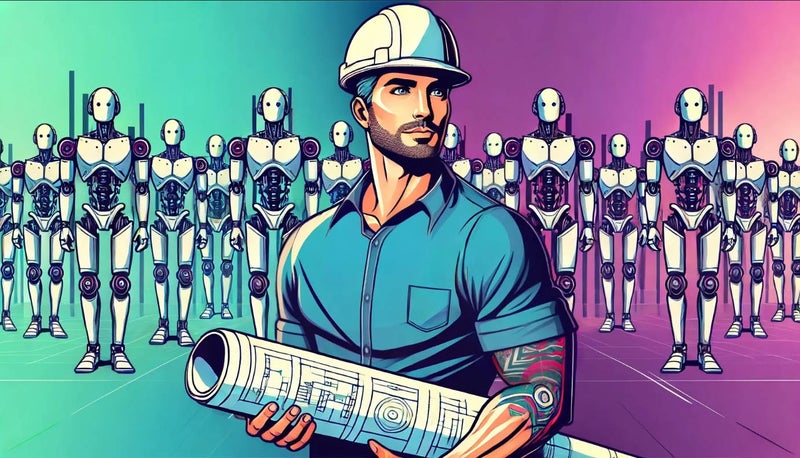Contents
- The Difference Between AI Use and AI Productivity
- The Year of The AI Automation Architect: 2025
- What is an AI Automation Architect?
- The Flywheel Effect of AI Automation
- The AI Productivity Flywheel
- 3 Steps to Becoming an AI Automation Architect
- What Does an AI Automation Look Like?
- Your AI Skills And Where to Go from Here
Top achievers know that to unlock the mysteries of hyperproductivity, they need to think like AI Automation Architects. Here’s how adopting this mindset will turn AI into your ultimate productivity engine, and a flywheel that rockets your career forward.
Do you have an AI-first approach to work?
Most people will say: yes! But they’re wrong.
And if you’re one of them I have some vexing news: you’re falling desperately behind.
As predicted, the gap between the average worker and high performers is widening at an alarming rate. And most remote workers are STUCK in AI mud, delulu about their AI skill level.
McKinsey sums it up beautifully:
- 2023 was the year the world discovered Gen AI and broader AI applications
- 2024 was the year organizations really started using – and benefitting from it
We are living through an unprecedented tipping point in technology.

- 65% of organizations are riding this AI wave across multiple business functions. We know the sector most impacted is tech – specifically marketing & sales, product and service departments, and IT.
We know AI creates tremendous business value:
“According to 92.1% of companies in 2023, investing in data and AI yields significant benefits, marking a sharp increase from the 70.3% who reported measurable outcomes from such investments in 2020.” – Vention Report.
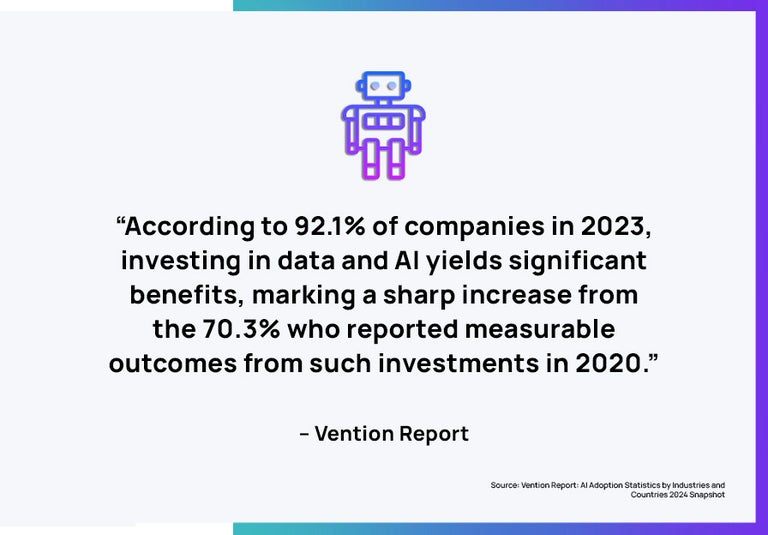
And we know that the #1 problem in AI is implementation.
- 76% of business leaders find AI implementation challenging
- Only 18% of these companies have an AI strategy
- Lack of AI skills among employees (31%) is still a primary challenge
Most shocking is that based on this 2024 AI skills report by Pluralsight, the tech talent who believe they HAVE mature AI skills, actually don’t.
Oof.
The report says that 81% of IT pros think they can use AI, but only 12% have experience with implementation.
That leaves a startling 69% of talent that needs to revisit their AI skill progress!

Are you one of them?
If so, this article will help adjust the mindset that’s keeping you from stepping into your true power as an early AI adopter and future automation architect.
The Difference Between AI Use and AI Productivity
You’ve jumped on ChatGPT and Claud and have tinkered in Midjourney with the delight of a child, given a new set of colored markers.
You’ve gleefully brainstormed, drafted emails, one-clicked your way to a fun audio snip or pulled some data insights from a lesser known LLM.
Perhaps you’ve even used some ‘invisible’ AI in existing tool stacks – it feels like AI is everywhere and we’re all using it, all the time.
But using these tools is AI 101.
I chatted to Heather Lother, VP of Talent and People Operations at Crossover. She's noticed a significant disparity in applicants understanding of what ‘AI-first’ means.
Crossover advertises a lot of AI-first positions – but what does it mean?

Heather says,
“Assume that the AI skills you have probably aren’t enough. If you’re going to apply for any Crossover role you should have automated some part of your workflow using an LLM – at the very least. Using AI tools is the same as using Google – it’s not AI-first.”
You might have spotted the difference: automation.
Tools are used, but AI automation is built.
It’s a strategic process that taps into your unique subject matter expertise and then harnesses the power of multiple AI tools to automate repetitive tasks.
It’s the difference between using a room in a house, and building a house.
Anyone can use a room, that’s why they exist.
But only highly trained experts can see multiple rooms and become architects of their own home.

True AI productivity relies on automation to free up time, reduce resource costs and accelerate workflows.
The architect of intelligent or cognitive automation combines AI with workflow automation, business process management (BPM) and robotic process automation (RPA).
- AI performs smart actions (analysis, decision-making, creating, learning)
- RPA connects systems that automate processes & tasks
- BPM offers a framework for identifying and optimizing end-to-end processes
- Workflow automation streamlines sequential steps or tasks in a process
The result is an automatic system or engine that does something pretty valuable.
So, AI automation is about making various forms of AI do the heavy lifting for you.
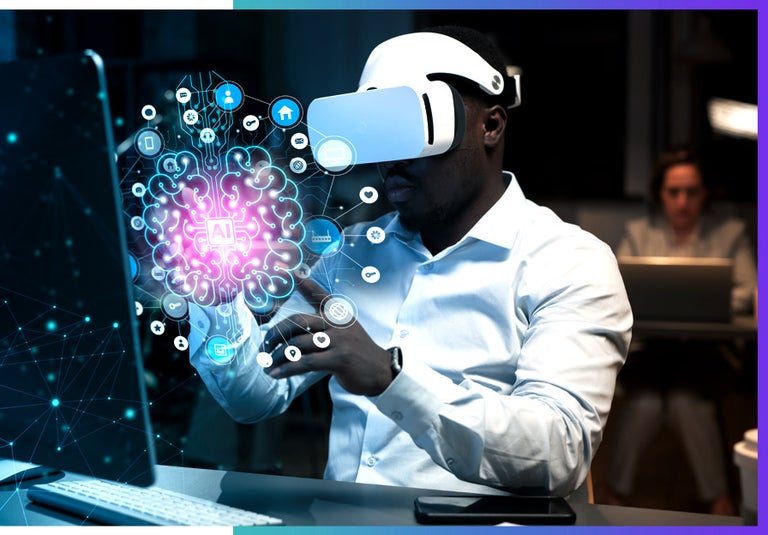
It’s about setting up smart workflows that handle repetitive tasks on autopilot so that you can focus on what really matters.
It’s a LOT more than just using AI tools - it’s putting them to work as a personal productivity engine that fuels innovation in your job role.
The Year of The AI Automation Architect: 2025
So, what comes next in 2025?
My prediction is that it will be the year of the AI Automation Architect.
- 95% of executives and 94% of IT practitioners believe that without the right talent controlling these AI tools and processes, they will fail.
Investment in AI is rising, and that includes companies investing in AI talent. This talent will be made up of people like you who have gone beyond AI use. They’ve upskilled and experimented to the point where they have genuinely created business value.
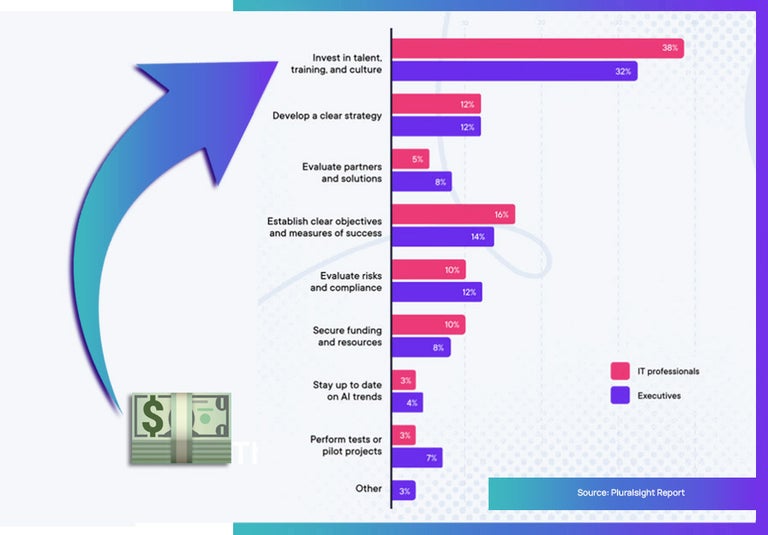
While the majority of folks remain delulu about their AI skills – you will NOT. You’re going to leave that private metaverse of illusion behind.
Because the career opportunity at this moment in time is far too great.
What is an AI Automation Architect?
An AI Automation Architect is a visionary builder.
This is someone who blueprints custom workflows, to construct scalable frameworks that turn one person’s effort into a team’s worth of impact.
About 2 years ago I wrote an article called, “Cognition is King,” and predicted that the stars of the third age of the internet would be people who learn to use AI to be more productive than everyone else.

And here we are.
The AI Automation Architect brings that prediction to life, serving as both a builder and a guide on the jagged frontier of AI.
For companies, they pinpoint where AI makes the greatest impact, showing how it can automate and accelerate niche operations.
Those of us who rise to become AI Automation Architects will be the most in-demand candidates in leadership roles over the next 5 years.
The Flywheel Effect of AI Automation
Why bother, really?
The world is changing faster than anything any of us have experienced before. Nothing makes sense most of the time, and no sooner have you landed a job, or mastered a skill – that you’re laid off or your skill has become outdated.
It’s hard work out there. But it doesn’t have to be!
AI automation can help you keep pace and create career momentum.
Fact is there’s a golden formula for staying in-demand:
Subject Matter Expertise + AI Automation = Hyper Productivity
Master this and your career (and income) will reach the stratosphere!
I’m a huge Jim Collins fan, and a lot of my work was influenced by his books, including a principle called Turning the Flywheel in ‘From Good to Great.’
I’ve adapted it to explain the impact of AI automation.
The AI Productivity Flywheel
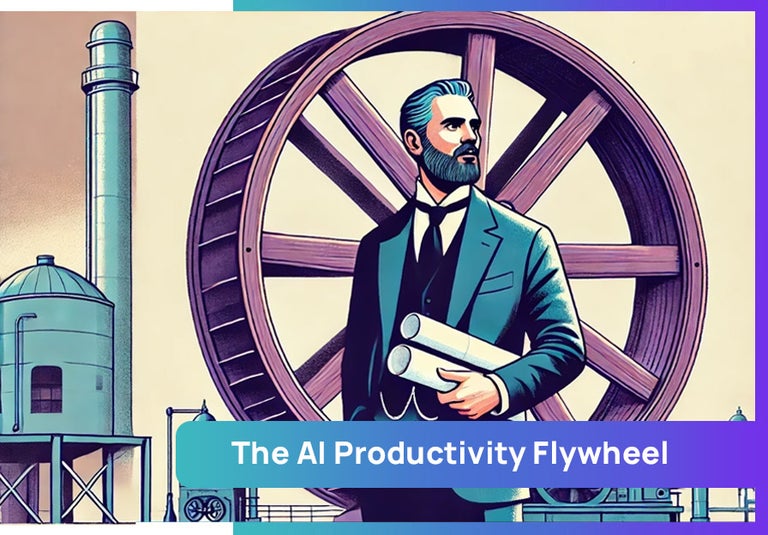
Picture an architect standing in front of a massive, wooden flywheel, each part symbolizing tasks, data flows, and repetitive processes ready for transformation.
At first, the flywheel is heavy, requiring strategic tests: designing workflows, identifying repetitive tasks, and mapping out automation paths.
Each test is a push forward.
With every calculated push, the architect builds momentum - tasks that once demanded hours now autonomously hum along.
Gradually, the flywheel turns faster - and automation compounds.
The architect steps back, and where there was once strain, there is now seamless flow, each turn freeing up time, and drastically amplifying output.
As the flywheel reaches peak momentum, it’s unstoppable.
The architect no longer needs to push - they merely steer. Each automated task fuels the next, and their work becomes a continuous engine of productivity.
The architect’s role shifts from doing to designing – from using to building - creating an automated engine that drives productivity and frees up their focus for higher-level targets.
This flywheel effect will make your career.
3 Steps to Becoming an AI Automation Architect
So how do you think like a high performer and shift into AI Automation mode?
Here are three powerful insights from our experts in HR, who are actively architecting the future.
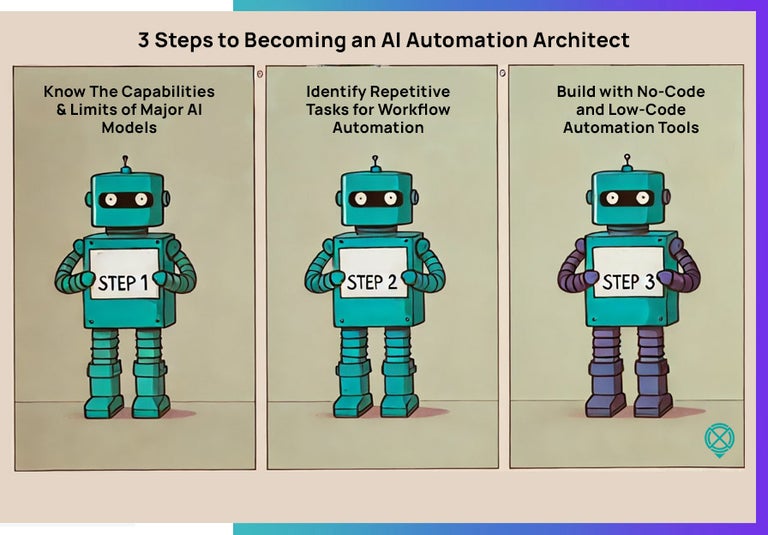
Step 1: Know The Capabilities & Limits of Major AI Models
Knowledge is power.
Right now, you’re an expert in your specific subject area. Now it’s time to start being strategic and think laterally about how things work. You can’t do that if you don’t know what’s out there – and I mean really know.
That means you have to go beyond superficial AI knowledge, and the basic skill set you’ve told yourself is advanced. It’s not.
Actively learn about each of the unique capabilities and limits of every major AI model out there, and how they would apply to your work. Yes – it’s a beast of a task. The start of that heavy, slow, experimentation flywheel.
Understand which models are best for creative ideation, and which work better for analytical tasks.
Experiment, experiment, experiment!
Push those limits. Knowing the distinctions allows you to choose the right tool at the right time.
This is an ongoing action for AI Automation Architects, because things change.
Step 2: Identifying Repetitive Tasks for Workflow Automation
Using AI for once-off tasks is out.
Shift gears and plunge into the exciting world of repeatable workflows! This is where you identify key areas of your job that sap HOURS of your time.
You’re going to become a pro at seeing these areas that need automating, then mapping out how to do it.
- Familiarize yourself with The Jagged Frontier (human-AI balance)
- Look for high priority areas that take up the most time in your day
- Keep a log of what can and can’t be automated and check-in on it
- If you have a second brain store educational resources on AI there
You will take that repetitive work and develop AI automation workflows to streamline them. One-by-one your flywheel will get lighter and faster as your tedious work diminishes.
AI Automation Architects are constantly listing, testing and queuing automations.
Step 3: Start Building with No-Code and Low-Code Automation Tools
You don’t need code to build proof-of-concept systems.
You can bring your workflows to life by connecting your AI tools with automation systems like Zapier, Make or Relay. The goal is to create an MVP system that can handle complex tasks with almost no oversight.
Instead of focusing on polished, production-level systems – build functional prototypes that automate key parts of your role. As the pace of change quickens, the flywheel will gain momentum as the systems settle, working better with every update.
You have to keep iterating, because each improvement on your system will boost productivity and help you stay in the top 1%.
This function will evolve but it will always be part of your job.
What Does an AI Automation Look Like?
They come in many shapes and forms. They can be ultra simple, or mega-complex.
Heather’s example:
Our HR team realized that creating a solid job spec is one of the most important things we do, even though it’s not exactly a daily task.
Still, we figured that drafting these specs was eating up hours for us - and for our hiring teams. Crafting a job spec that’s precise enough to build a skills-based hiring pipeline requires a sharp vision of the role, a clear picture of the hiring outcomes, and a hefty dose of research to nail down the value proposition.
So, back in 2022, we got creative!
We designed a set of AI prompts and fed them into our own CustomGPT.
Now, hiring managers can simply chat with our AI bot, and - voila! - they’re 90% of the way to a high-quality, tailored job spec.
This shift has transformed our role into quality control, where we focus on fine-tuning the outputs, providing top-notch customer service, and staying in sync with all of our stakeholders.
So, we took what was once an 8-20 hour grind and cut it down to just 1 hour.
Your AI Skills And Where to Go from Here

Do your AI skills need an upgrade?
If you’re targeting top-tier ‘AI-first’ tech roles, then you need experience architecting your own automations.
It’s that simple.
This mindset shift will careen you past the 69% of remote workers still wandering about in Delululand, convinced that their AI skills are next level because they’ve asked ChatGPT for the weather.
Use it as your blueprint for becoming an AI Automation Architect, and step into your future as a high performer that uses AI as your primary productivity engine.
When you master the golden formula (subject matter expertise + AI automation) you’ll be able to transform boring routine work into hyper productive systems that will make you a formidable force.
I’m talking about a one-person team.
It’s time to leverage the AI Productivity Flywheel - start small, automate repetitively, and watch as momentum compounds into unstoppable efficiency.
It’s all about building workflows that save time, reduce costs, and free you to focus on what matters most.
That’s what will make you an indispensable hire.
It’s the ultimate way to future-proof yourself over the next 5 years.
Don’t wait – automate!
Already an architect?


